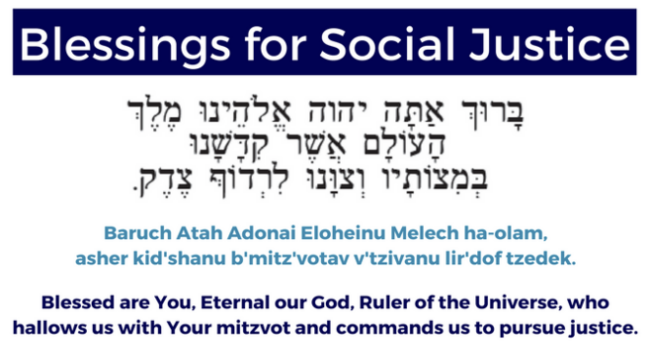Clip
To be read while preparing for immersion:
I stand here today in anticipation of welcoming a child.
As I arrive at this juncture, I carry with me the varied emotions of gratitude, excitement and fear.
I come today in amazement of the miracle of budding life, and in full acknowledgement of the strength and wisdom through which life is formed.
Hineini, here I am, ready to fulfill the obligations of being a loving parent, a devoted presence, and a dedicated guide throughout my child's journey.
Clip source: Mayyim Hayyim
Clip
Researchers have begun to establish a causal link between storytelling and thriving. In 2001, psychologists Marshall Duke and Robyn Fvush compared children's psychological health with their knowledge of their own family history. They measured this knowledge on a "Do You Know?" scale. This scale turned out to be the best single predictor of children's emotional health and happiness.
The more children knew their family's history, the stronger their sense of control over their lives, the higher their self-esteem, and the more successfully they believed their families functioned.
Two months after this study was conducted, the September 11 attacks occurred. The psychologists went back and studied how the same group of children responded to that trauma. The results were the same: "The ones who knew more about their families proved to be more resilient, meaning they could moderate the effects of stress."
To explain the connection between story and resilience, the psychologists coined the term ‘intergenerational self.’ It's a sense that you're part of something bigger, that your life is an episode in a larger narrative. More than just entertain and amuse, (which they do) cross-generational stories serve another purpose.
Family stories let children know that they're not alone, and that those who came before them celebrated triumphs and overcame struggles, just as they do.
Additionally, in a study of family stories at Emory University, it was found that family stories seem to be transferred by mothers and grandmothers more often than not, and that the information was typically passed during family dinners, family vacations and family holidays. Other data indicated that these very same regular family dinners, vacations, and holiday celebrations occur more frequently in families that have high levels of cohesiveness. It is the ‘intergenerational self’ and the personal strength that is derived from it that are associated with increased resilience, better adjustment, and improved chances of good clinical and educational outcomes.
The researchers define three types of family narratives:
1. The ascending narrative: we came from nothing and now we've succeeded (rags to riches).
2. The descending narrative: we used to have it all and now we have nothing.
3. And, the most healthful narrative is called the oscillating family narrative: we've had ups and downs, and we've persevered, as a family.
This third narrative is the story of the Jewish people.
When we share stories - especially over holidays - year after year after year, we invite the next generation into the Jewish family story. Our stories are still unfolding.
Clip
Translation by Rabbi Zalman Schachter-Shalomi
Ribono Shel Olam, Ruler of the Universe, I hereby forgive whoever has hurt me, and whoever has done me any wrong; whether it was deliberately or by accident, whether it was done by word or by deed, in this incarnation or in previous ones.
May no one be punished on my account.
May it be Your will, O Lord my God, and God of my parents, that I sin no more, that I do not revert to my old ways, that I do not anger You any more by my actions.
May I not do that which is evil in Your sight.
Wipe away the sins that I have committed, with Your great compassion, but not through sickness or suffering.
May these words of my mouth, and the prayers that are in my heart, be acceptable before You, O Lord, my Rock and my Redeemer.
May we all be blessed with happiness, holiness, healing, serenity, and peace.
-by Rabbi Isaac Luria and shared by Our Jewish Recovery
Bedtime Shema by Rabbi Isaac Luria and shared by Our Jewish Recovery
By Recustom
Preview
More
Clip

Carry the Social Justice Blessing With You
By Recustom
Preview
More
Clip
Makor HaChayim, Source of Life,
You created human beings in your image,
B'tzelem Elohim*
Each one of us a unique creation -
genetic material that holds a neshamah**
a soul that is pure.
Our bodies and our minds
are different and diverse creations -
Full of strengths and vulnerabilities,
talents, challenges, abilities, struggles.
Some of us born into our bodies needing help
to move, to see, to hear, to talk, to eat.
Some of us will take our bodies and minds for granted
until they change with age,
reminding us that there are times
when we all need support.
The human body is a vessel that we can see, but deeper,
what is constant and in common among us all
is the unseen -
the souls that You have placed within us.
Makor HaChayim, Source of Life,
Help us to encounter one another
as that pure soul created in Your image;
that we see ourselves and one another
as B'tzelem Elohim.
*B'tzelem Elohim: In Genesis 1:27, we read that God created human beings in God's own image.
**Neshamah: A Hebrew word meaning 'soul.'
-by Gabrielle Kaplan-Mayer
Created in Your Image: a Blessing for Inclusion by Gabrielle Kaplan-Mayer
By Recustom
Preview
More
1 / 6





